Sea Birds
Click on a picture below to jump directly to that Sea Bird's information
Great Skuas

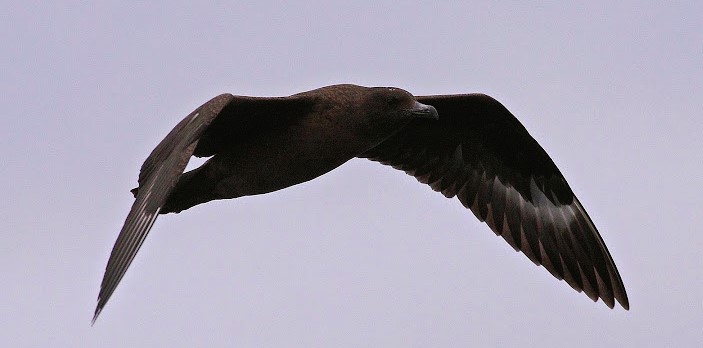
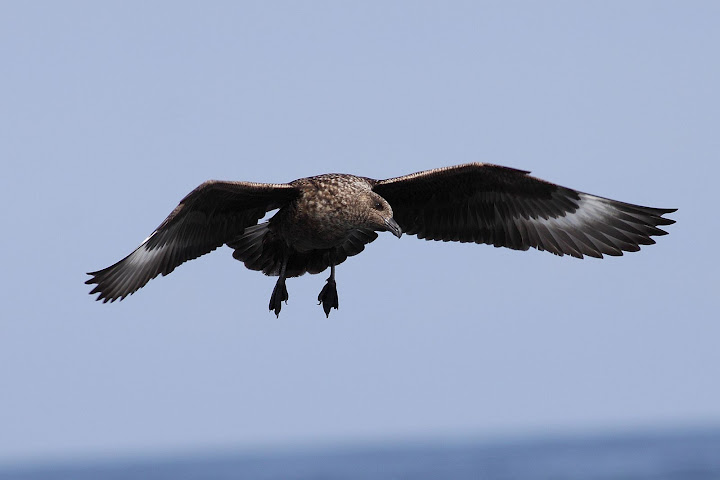
Great Skuas are autumn passage migrants off the St. Ives NCI Station seen between August and early November. The numbers this year have plummeted, due once again to the Avian Flu. On St. Kilda and the offshore islands off Scotland ,we have lost the whole population of these large predatory birds, with very few passing the St. Ives Island this autumn. The Great Skuas have only a small distribution in the North Atlantic breeding in the Outer Hebrides Orkney, Shetland Islands, Iceland and the Lofoten Islands off Norway and in Northern Norway up to the North Cape. with a small population in the Arctic Ocean off Finland, with an expanding population in Svalbard, the great number of Great Skuas winter in the South Atlantic with many birds wintering in the South West approaches even in the St. Ives Bay.
Gannet
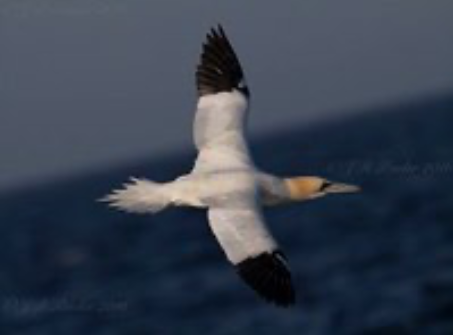
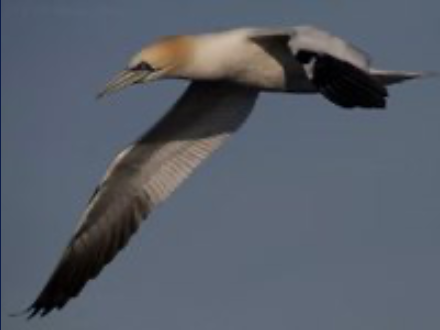
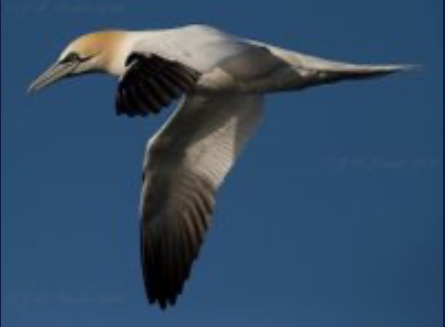
During August and September there were many dead Gannets, in the St. Ives Bay where on one watch I witnessed 6 dead and dying Gannets off the NCI Watch Station and a large number were only just missing the Island itself obviously being very sick birds, A member of the public came to the station to say that 20 dead Gannets had been picked up at Porthkidney Beach, while 6 dead Gannets had been picked up on Porthmeor Beach on the same day. On Bass Rock 125,000 Gannets breed there but after this Avian Flue there were only 10,000 left, the Gannet corpses littered the base of the Bass Rock. The Avian Flue seems to only affect Gannets in the British Isles and southern Norway, where the Irish populations seem to have escaped this terrible disease. Gannets breed throughout the coastal cliffs and islands of the British Isles with large colonies on Bass Rock, Bempton Cliffs, St. Kilda, Skokholm, Shetland, Orkneys, Outer Hebrides, and the Skelligs in South West Ireland and the Channel Islands. Thew Avian Flue Virus can live in water for a period of 12 months and therefore it can easily return with water birds, at the moment a small number of migrant geese are being affected by this Avian Flue, which has affected The price of eggs and the price of Christmas Turkeys and other Christmas poultry.
Great Shearwater
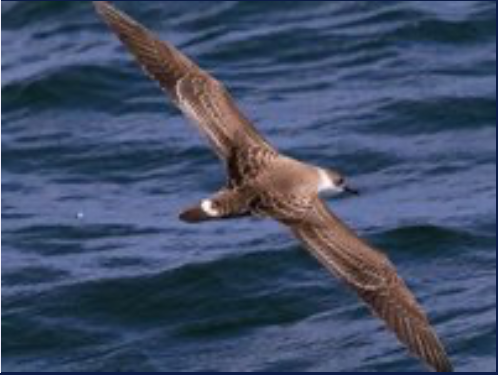
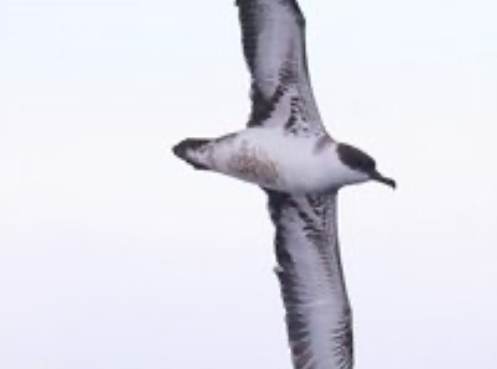
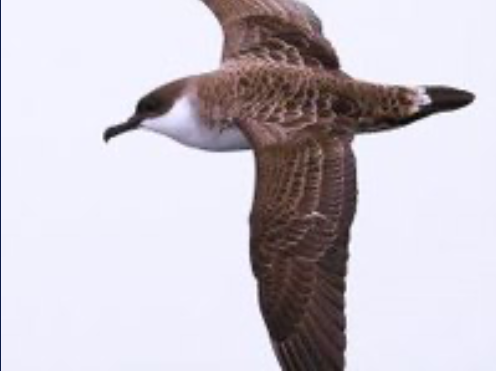

This autumn to early winter one of the largest numbers of Great Shearwaters ever recorded in Cornish waters. Great Shearwaters usually appear in mid-August, peaking in September with the odd bird observed by mid-October, during which time they make an 8,000 mile journey to their breeding grounds on the volcanic slopes of Tristan Da Kuna, to arrive at their nest holes by the end of October and the first week of November, up to thirty years ago Tristan Da Kuna was the only place in the world where the Great Shearwaters breed, with a tiny population of only a few pairs breeding in the Falkland Islands. These last two weeks there have been tens of thousands of Great Shearwaters in our local waters, which is very worrying, with daily totals of 10,000 seen off the Lizard and up to 2,000 off Porthgwarra, and Pendeen, also a daily total of over 2,000 off the Isles of Scilly. Many of these large Shearwaters have been feeding on Anchovies which traditionally are found in huge shoals in the Bay of Biscay, but due to the increased water temperature have moved North to feed off the Isles of Scilly and the South Cornwall coast. These huge shoals of Anchovies have encouraged the Great Shearwaters and the other large shearwater the Cory’s Shearwater to continue to feed before moving south to breed. As I am writing this The Great Shearwaters should be 8,000 miles away on the volcanic islands of Tristan Da Kuna in their nest holes, with a single large white egg being incubated, but with these Great Shearwater’s still here in the Cornish waters is very worrying. Birds are Biological Indicators, and this shows the effects of Global warming with the sea temperatures rising. In 68 years of studying, recording and documenting Seabird Migration, this is the first time that I have observed the occurrence of this phenomena, which may been just a one off or it may well be a regular occurrence.
Cory's Shearwater
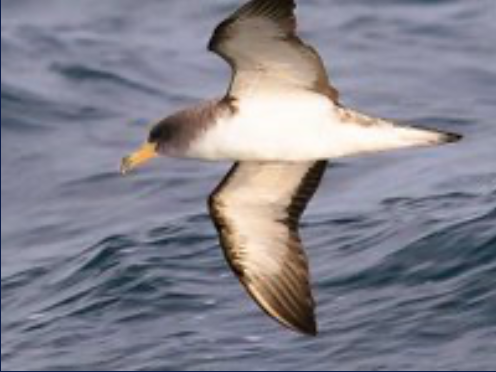
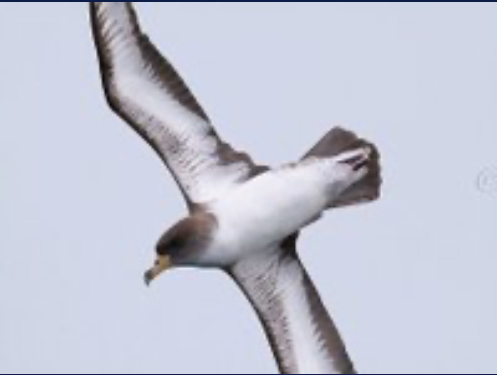

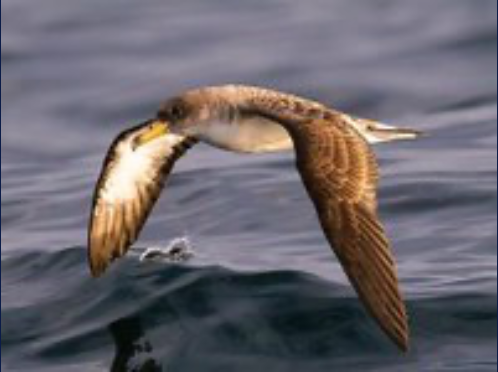
Cory’s Shearwaters are found as far North as Iceland feeding on shoals of squid, appearing around the Cornish Coast from Mid-July onwards where they disappear in the first week of September, returning to the South Atlantic and the Western Mediterranean to winter, but this year we have had daily records of hundreds of Cory’s Shearwaters around our coasts feeding in with the Great Shearwaters on the large shoals of Anchovies, The anchovies have been forced to move North from the Bay of Biscay because the water temperature have increased. This has encouraged the Cory’s Shearwaters, to stay further North for nearly two months longer than they should have. The Cory’s Shearwater breeds in the Madeira Islands, Cape Verde, Canaries, and Berlenga Islands, with a large population breeding on the Balearic Islands and the Greek islands in the Aegean Sea. They winter in the Southern Ocean off Namibia and South Africa with a large population moving into the Western Indian Ocean, while some may winter off Brazil and Uruguay. The fact that Cory’s Shearwaters are still in Cornish waters in early November is again very worrying, it may be just a one off or it may be a regular occurrence every autumn or early winter. Birds are Biological Indicators and to most people around our coasts they may not have noticed these seabirds, but to the informed like myself will be concerned with what is happening. It is no different with the Swallows staying in South Africa during the British summer months.
Sooty Shearwater
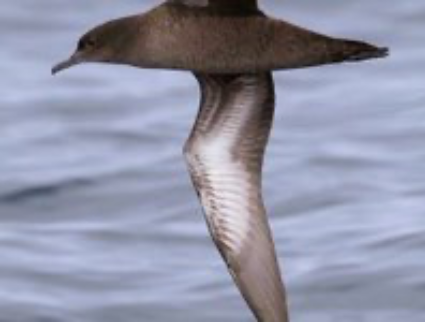
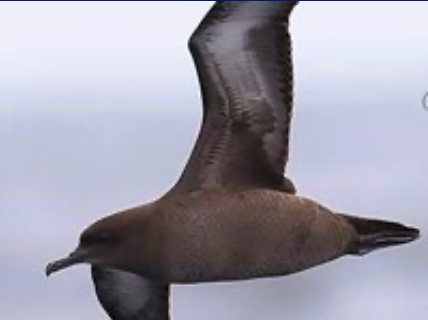
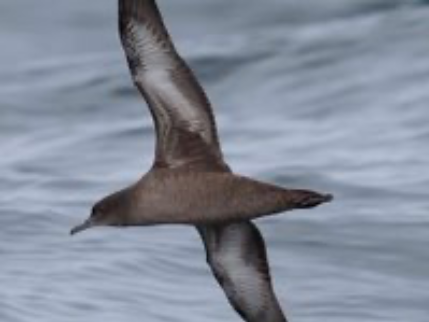
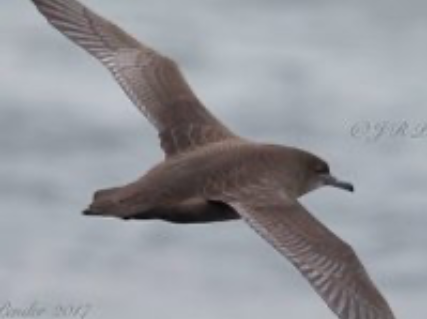
The Sooty Shearwater is also an autumn migrant off our shores, appearing from Late June through to Late October with the peak in late August to September, where they will disappear to the South Atlantic to breed on the Falkland Islands Staten Island, Woolaston, Deceit, near Cape Horn, with egg laying taking place in November to December. The Sooty Shearwaters circumnavigate the Atlantic Ocean, moving up the Eastern Seaboard of the United States moving South In late summer to arrive at its breeding grounds in late October. There has been a large number of Sooty Shearwaters off the Cornish Coast observed feeding with the Great Shearwaters and the Cory’s Shearwaters in these last two weeks. These Sooty Shearwaters should be breeding in their nest holes with a single white egg being incubated at this moment. The other name for the Sooty Shearwaters is the Mutton Bird, so called because the old ‘Kelpers’ would go to the nest sites and take out the very fat young Sooty Shearwaters and eat them, it was said to taste like mutton, hence the name of “Mutton Bird”
Leach's Petrels
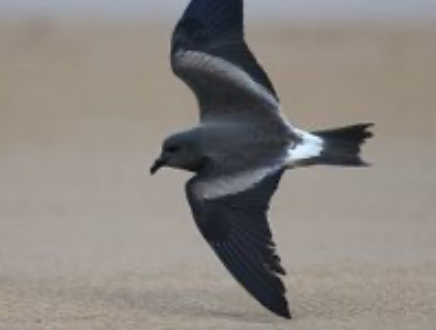
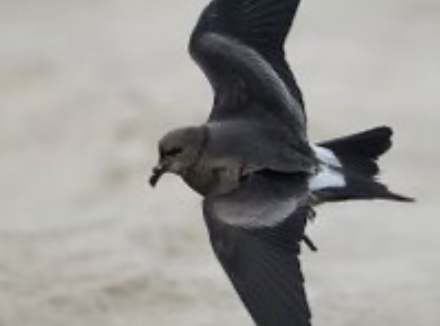

The Leach’s petrels breed in South Greenland, Faeroe Islands, Lofoten Islands off Norway, St Kilda, Flannan Islands, North Rona, and Sula Sgeir and the Shetland Isles. Wintering off Namibia and South Africa, also wintering along the Eastern Cape in the Indian Ocean. In the recent storms with a North Westerly gale a daily total of 50, Leach’s Petrels passed the NCI Station which is the highest number of Leach’s petrels that have passed by for well over 40 years. These figures were recorded nationally on most web sites.
Arctic Skuas
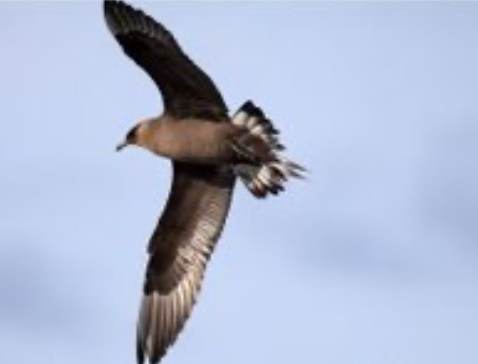
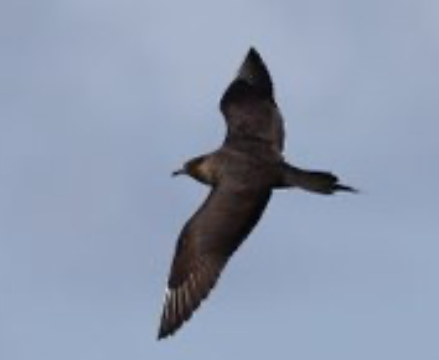

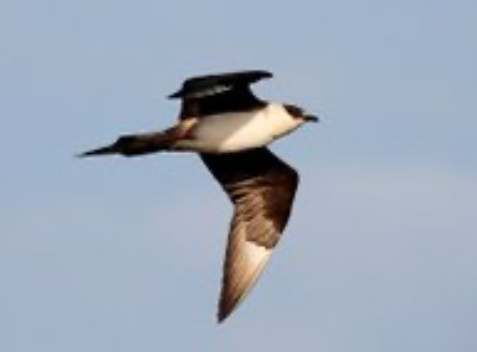
The recent North Westerly gales have brought in one of the most graceful of Seabirds the Arctic Skua, which breeds off the East coast of Greenland, Iceland, Faeroes, Orkney’s and Shetland the Outer Hebrides, and mainland Scotland. It also breeds in Sweden, Norway, Finland Bear Island and Spitzbergen, wintering off Angola and Namibia, with often as many as 500 Arctic Skuas behind a single trawler. Arctic Skuas can number well in excess of 100 birds on a single day passing the NCI Station, at the moment small numbers are constantly passing the Island daily, once again very late possibly due to the unseasonal high temperatures in the North Atlantic
Pomarine Skua
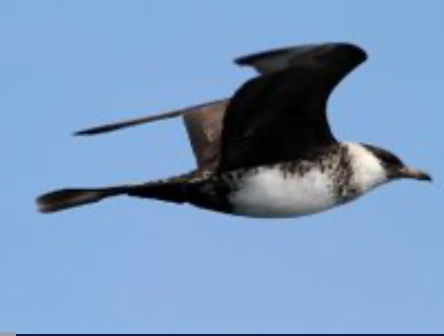

A very late passage of this uncommon seabird, Pomarine Skuas breed well above the Arctic Circle on the coastal regions of Siberia along the shores of the Arctic Ocean, breeding on the tundra all the way across Siberia feeding totally on Lemmings, where in a good Lemming year they will double the clutch of eggs whereby in a poor Lemming year they will not breed at all. A really good late passage of Pomarine Skuas occurred during the recent North Westerly gales, passing the NCI Station. The Pomarine Skuas winter off Namibia and around the coasts of South Africa, following Trawlers well out at sea
Great Northern Diver
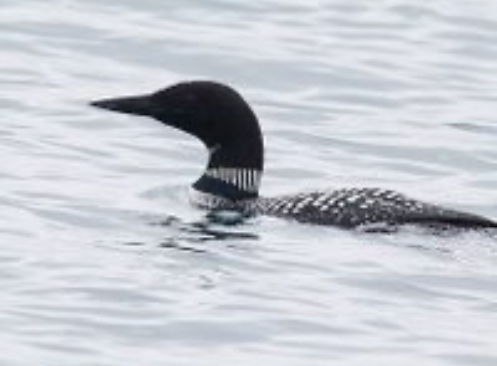
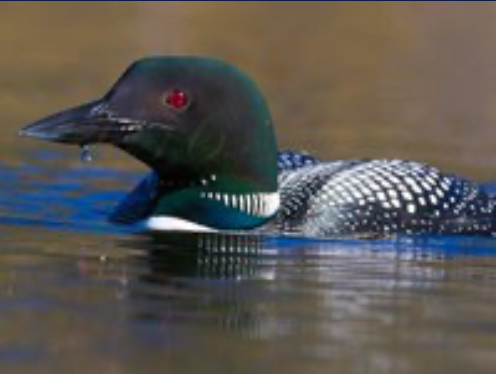


Great Northern Divers are winter visitors to the St. Ives Bay as well as passage migrants from early October to December, with the spring Northward movement starting in March. Great Northern Divers breed in Canada, Great Lakes, also breeds Greenland, Iceland, Novaya Zembla, and above the Arctic Circle in Norway, Sweden, and Finland,. The Great Northern Divers winter along the shores of Scandinavia south to Brittany, France occasionally the Bay of Biscay, but by far the largest wintering numbers are around the coast of the British Isles. I had some Great Northern Divers in the St. Ives Bay today. With a couple of passage birds. They can often be seen feeding close under the station diving for lengthy periods on Shore Crabs which is thier favourite food.

© NCI St Ives 2013 -2024
The National Coastwatch Institution is a charity registered to save lives around our coast — No. 1159975

